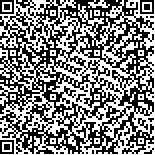| 本文已被:浏览 3693次 下载 2111次 |

码上扫一扫! |
|
|
| 刺参(Apostichopus japonicus) 9月龄主要经济性状遗传力的估计 |
|
和 飞1,2, 王印庚1,3, 廖梅杰1,3, 李 彬1,3, 孙明超2, 杜 佗1,3, 张文泽1,3, 范瑞用4
|
|
1.农业部海洋渔业可持续发展重点实验室 中国水产科学研究院黄海水产研究所 青岛 266071;2.上海海洋大学 上海 201306;3.青岛海洋科学与技术国家实验室 海洋渔业科学与食物产出过程功能实验室 青岛 266071;4.岛瑞滋海珍品发展有限公司 青岛 266000
|
|
| 摘要: |
| 本研究基于全同胞组内相关法对9月龄刺参(Apostichopus japonicus)苗种体长、体重、肉刺总数3个性状的遗传力进行了评估。以前期收集、保存的刺参群体为亲本,选取了健康刺参29头,采用不平衡巢式设计方法及人工刺激采卵授精方法,按照1雌配2–5雄的原则,构建了6个母系半同胞家系及23个父系全同胞家系,至9月龄时,分别抽取每个家系30–50个后代测定相应个体的体长、体重及肉刺总数,应用数量遗传学分析和全同胞组内相关法估计刺参9月龄体长、体重和肉刺总数共3个生长性状的遗传力。结果显示,9月龄刺参体长雌性组分遗传力的估计值为0.87,雄性组分遗传力估计值为0.85,全同胞组分遗传力估计值为0.86;刺参体重雌性组分遗传力估计值为0.20,雄性组分遗传力估计值为0.73,全同胞组分遗传力估计值为0.46;肉刺总数雌性组分遗传力估计值为0.43,雄性组分遗传力估计值为0.32,全同胞组分遗传力估计值为0.37。t检验表明,体长、体重的雄性组分遗传力达到显著水平(P<0.05),全同胞组分遗传力均达到极显著水平(P<0.01),肉刺总数的遗传力均未达到显著水平。 |
| 关键词: 刺参 大规格苗种 体长 体重 肉刺总数 家系 遗传力 |
| DOI:10.11758/yykxjz.20160312001 |
| 分类号: |
| 基金项目: |
|
| Estimation of the Heritability of Three Economic Traits in 9-month-old Sea Cucumber Apostichopus japonicus |
|
HE Fei1,2, WANG Yingeng1,3, LIAO Meijie1,3, LI Bin1,3, SUN Mingchao2, DU Tuo1,3, ZHANG Wenze1,3, FAN Ruiyong4
|
|
1.Key Laboratory of Sustainable Development of Marine Fisheries, Ministry of Agriculture Yellow Sea Fisheries Research Institute, Chinese Academy of Fishery Sciences, Qingdao 266071;2.Shanghai Ocean University, Shanghai 201306;3.Qingdao National Laboratory for Marine Science and Technology, Laboratory for Marine Fisheries Science and Food Production Processes, Qingdao 266071;4.Qingdao Ruizi Seafood Development Co., Ltd, Qingdao 266400
|
| Abstract: |
| Heritability is the most basic parameter for estimation of selection effect, breeding value and comprehensive selection index. It is widely applied in the determination of the selection method and artificial breeding practice. In this study, the heritability of body length, body weight and the number of pallet were estimated in 9-month-old sea cucumber (Apostichopus japonicus), with the goal of providing heritability reference for breeding practice. A total of 29 mature sea cucumbers from five different populations were selected as parents. Six dams and twenty-three sires were mated by unbalanced nested design using artificial insemination. Each dam was mated with 2 to 5 sires, producing 6 half-sib families and 23 full-sib families. Full-sib families were reared separately under identical environmental conditions. Thirty to fifty individuals from each full-sib family were randomly selected for assessment of three economic traits: body length, body weight and the number of pallet in 9-month-old sea cucumber. The heritability of body length, weight and the number of pallet was compared statistically using GLM (General Linear Model) procedure of the SPSS software. The results indicated that the heritability of body length in full-sibs, maternal half-sibs and paternal half-sibs was estimated to be 0.86, 0.87 and 0.85, respectively. The heritability of body weight in full-sibs, maternal half-sibs and paternal half-sibs was estimated to be 0.46, 0.20 and 0.73, respectively. The heritability of the number of pallet in full-sibs, maternal half-sibs and paternal half-sibs was estimated to be 0.37, 0.43 and 0.32, respectively. Results obtained from t test showed that the heritability of body length and body weight in paternal half-sibs was significant (P<0.05), and the heritability of body length and body weight in full-sibs was highly significant (P<0.01). By contrast, the heritability of the number of papilla in full-sibs, maternal half-sibs and paternal half-sibs was not significant. The estimation of heritability of the three economic traits in the large-scale seeding program could provide theoretical basis and technical reference for future artificial breeding of A. japonicus. |
| Key words: Apostichopus japonicus Large-scale seeds Body length Body weight Number of pallet Full-sib family Heritability |